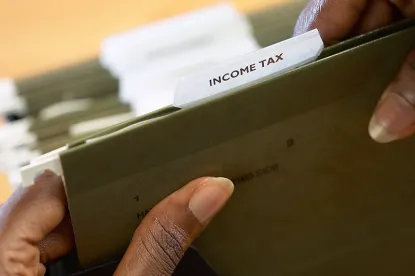On August 6, 2015, 18 years after U.S. Congress authorized regulations under Internal Revenue Code Section 721(c), the U.S. Department of the Treasury and the Internal Revenue Service (IRS) released Notice 2015-54 announcing that they intend to issue regulations under Code Sections 721(c), 482 and 6662 addressing certain controlled transactions involving U.S. persons that transfer appreciated property to a partnership with foreign related partners. The Code Section 721(c) rules are intended to ensure that the U.S. transferor takes income or gain attributable to the contributed appreciated property into account either immediately or periodically. The Treasury and IRS also intend to issue regulations under Code Sections 482 and 6662 to ensure appropriate valuation of such transactions.
Overview
Notice 2015-54 closes a gap that has existed with respect to outbound transfers of appreciated property to partnerships as compared to outbound transfers of appreciated property to corporations. Under the notice, the general non-recognition rule of Code Section 721(a) will be called off with respect to contributions of built-in gain property (Section 721(c) property) by a U.S. transferor to a controlled partnership having foreign related persons as partners (directly or indirectly) unless the partnership applies a series of rules that operate to prevent the U.S. transferor from shifting the built-in gain to related foreign persons.
The rules set forth in Notice 2015-54 are effective for transfers occurring on or after August 6, 2015 (and to transfers occurring before that date resulting from entity classification elections filed on or after August 6, 2015). While the notice appears to be aimed at specific transactions—outbound transfers of intangible property by U.S. persons to non-U.S. partnerships with foreign related partners—the rules are broad. The notice applies to the transfer of any appreciated property by a U.S. person to any partnership, existing or newly formed, domestic or foreign, if a related foreign person is a direct or indirect partner in the partnership and the U.S. transferor and one or more related persons (domestic or foreign) own more than 50 percent of the interests in partnership capital, profits, deductions or losses.
The notice does not foreclose outbound property transfers; however, the notice meaningfully limits opportunities to defer income recognition with respect to contributed built-in gain property.
Background
Prior to their repeal as part of the Taxpayer Relief Act of 1997 (the 1997 Act), Code Sections 1491 through 1494 imposed an excise tax on certain transfers of appreciated property by a U.S. person to a foreign partnership. While not complementary, these rules conceptually corresponded to the Code Section 367 rules governing outbound transfers of appreciated property by a U.S. person to a foreign corporation. Code Section 367 can operate to either call off the non-recognition rules of Code Section 351(a) (or Code Section 368) or, with respect to certain intangible property, can re-characterize the contribution as a sale of such intangible property in exchange for payments contingent on the productivity, use or disposition of the intangible property, requiring the contributor to include annually, over the shorter of the life of the asset or twenty years, an amount reflecting the amounts that would have been received over the life of the asset (or immediately on disposition of the asset).
Following the repeal of Code Sections 1491 through 1494, contributions of property by a U.S. person to a foreign partnership could be made on a tax-free basis—there was no longer an excise tax and the general non-recognition rules remained in force. Such contributions remained subject to the partnership tax rules applicable to contributions of built-in gain (or built-in loss) property (“Section 704(c) property”). Mechanically, the Code Section 704(c) rules operate, over time and subject to limitations, to cause the contributing partner to recognize gain (or loss) with respect to the contributed property. Code Section 704(c) allocations must be made using a reasonable method; the regulations describe three such methods—the traditional method, the traditional method with curative allocations and the remedial method—which may be reasonable depending on the facts and circumstances. The consequence of method selection is highly fact-dependent, and amount and timing of income inclusion will vary. The traditional method and the traditional method with curative allocations each tolerate some shift in tax burden as between the contributing partner and the non-contributing partners, primarily due to the application of the ceiling rule. The ceiling rule limits the capacity to remedy book / tax disparities in those situations in which there are insufficient tax items to match with book items. The remedial method, which causes the contributing partner to recognize income in the same amount and at the same time as would occur had the contribution not been made, generally operates to eliminate any potential for shifting the tax burden associated with contributed property away from the contributing partner by eliminating the effect of the ceiling rule.
Perhaps recognizing the effect of the ceiling rule limitation, and the lack of symmetry between the rules applicable to outbound transfers to a partnership and those applicable to outbound transfers to corporate entities, Congress authorized Treasury to promulgate regulations to override the partnership non-recognition rule and to instead impose tax on gain realized on the transfer of property to a partnership (domestic or foreign) if the gain, when recognized, would be includible in the gross income of a person other than a U.S. person. Congress also authorized Treasury to promulgate regulations applying Code Section 367(d) principles to transfers of intangible property to a partnership.
Notice 2015-54 initiates the implementation of this regulatory authority. In addition, the notice further develops the Code Section 482 principles applicable to contributions of property to a partnership.
Notice 2015-54
Notice 2015-54 addresses Treasury and IRS concerns that transactions could be constructed in a manner inconsistent with Code Section 704(c) and Code Section 482 principles by calling off the general non-recognition rule applicable to contributions of property to certain partnerships (a Section 721(c) partnership). This is unless the partnership applies the Gain Deferral Method (described below) with respect to built-in gain property contributed by U.S. persons (Section 721(c) property).
There are five requirements under the Gain Deferral Method:
-
First, the Section 721(c) partnership is required to adopt the remedial allocation method for built-in gain with respect to Section 721(c) property. Other allocation methods which might defer or shift the tax burden with respect to that property may not be adopted with respect to any Section 721(c) property, regardless of whether that property is ceiling-rule limited or not. Assume, for example, that a U.S. transferor contributed “property A” to the Section 721(c) partnership and that property A has built-in gain and is ceiling-rule limited (e.g., there are insufficient tax items to correspond to book allocations to the non-contributing partner). Under Notice 2015-54, the partnership must adopt the remedial method with respect to property A. Next, assume that the U.S. transferor contributes multiple built-in gain assets, only one of which is ceiling-rule limited. Under the notice, all of the contributed built-in gain assets are Section 721(c) assets, and the remedial method must be used for all such assets, regardless of whether the ceiling rule applies. The single ceiling-rule-limited asset is arguably the asset intended to be covered by the notice. Nevertheless, the remedial method must be adopted for all of the built-in gain assets, else non-recognition treatment is lost.
-
Second, as long as there is any remaining built-in gain with respect to Section 721(c) property, the Section 721(c) partnership is required to allocate all items of Code Section 704(b) income, gain, loss and deduction with respect to the Section 721(c) property in the same proportion. The notice provides little guidance with respect to interpretation of this mandate. It seems clear that the rule was intended to prevent partners from unraveling the impact of remedial allocations through special allocations which might otherwise be respected. That is, to the extent the partnership has Section 721(c) property, there will no longer be any ability to “specially” allocate income and loss among the partners with respect to that property. It is less clear, however, how this rule should be applied to other partnerships falling within the Section 721(c) umbrella. For example, it is not clear how this rule would apply to preferred partnership interests when the allocation scheme is designed to protect preferred capital. It is also not clear how the rules will apply when an allocation is mandated as the partnership complies with certain regulatory allocations.
-
Third, if the Section 721(c) partnership is a foreign partnership, a U.S. transferor must comply with the reporting requirements imposed under Code Sections 6038, 6038B, and 6046A. Form 8865 (Return of U.S. Persons With Respect to Certain Foreign Partnerships) will be modified to include information with respect to contributions of Section 721(c) property to Section 721(c) partnerships.
-
Fourth, the U.S. transferor will recognize built-in gain with respect to Section 721(c) property on the occurrence of an acceleration event (any transaction that would either reduce the amount of remaining built-in gain that the U.S. transferor would recognize, a distribution of the built-in gain property to a person other than the U.S. transferor, or the failure to comply with the requirements for applying the Gain Deferral Method). Certain transactions are not treated as acceleration events. For example, the contribution of Section 721(c) property by a Section 721(c) partnership with U.S. partners to a domestic corporation, is not an acceleration event. Additionally, the contribution of Section 721(c) property by a Section 721(c) partnership with U.S. partners to a foreign corporation is not an acceleration event if Code Section 367 and the regulations thereunder would apply to the transfer.
-
Fifth, the Gain Deferral Method must be adopted for all Section 721(c) property subsequently contributed to the Section 721(c) partnership by the U.S. transferor and all other U.S. transferors that are related persons until the earlier of (i) the date that no built-in gain remains with respect to any Section 721(c) property to which the Gain Deferral Method first applied; or (ii) the date that is 60 months after the date of the initial contribution of Section 721(c) property to which the Gain Deferral Method first applied.
Treasury and IRS also intend to issue regulations providing an additional requirement to the Gain Deferral Method that U.S. transferors (and, in certain cases, the Section 721(c) partnership) must extend the limitations period with respect to all items related to the contributed built-in gain property through the close of the eighth full taxable year following the year of the contribution. These regulations will not require the limitations-period extension for taxable years that end before the date such regulations are published and will be effective for transfers and controlled transactions occurring on or after the date such regulations are published. The limitations period regulations together with the 60-month rule above appear intended to coordinate the new rules applicable to partnerships with the gain recognition agreement rules applicable to certain outbound transfers to corporate entities.
Notice 2015-54 also addresses Treasury and IRS concerns that partnership interests received in consideration for contributed property may be incorrectly valued, reducing the amount of income or gain allocated to U.S. partners. The IRS has broad authority under Code Section 482 to adjust the allocation of income among parties to a controlled transaction so as to properly reflect the economics of the transaction. The notice states, however, that the IRS has administrative challenges when making adjustment years after a controlled transaction has occurred, because taxpayers have better access to information about their businesses and risk profiles. The notice concludes that as a result, the IRS may be at a disadvantage.
The Treasury and IRS intend to address this by augmenting current cost-sharing regulations under Code Section 482. While the contours of the regulations are not described, the Treasury and IRS intend to provide guidance pertaining to the evaluation of the arm’s length amount charged with respect to controlled transactions involving partnerships. The rules are expected to follow Regulations Section 1.482-7(g) which provides guidance with respect to the arm’s length charge applicable to “platform contributions” (i.e., the buy-in charge for the contribution by a party of a resource, capability or right to the cost-sharing arrangement if it is reasonably anticipated to contribute to the development of the cost-shared intangibles). The “platform contribution” concept is a relatively new one under the cost-sharing regulations and has the effect of widening the scope of the buy-in requirement relative to prior versions of those regulations. The notice announces that this concept will be applied in the partnership area as well. The regulations will be adjusted to take into account the differences between cost-sharing arrangements and partnerships.
The regulations will also provide that, in the event of a trigger based on a significant divergence of the actual returns from projected returns for controlled transactions involving a partnership, the IRS may make periodic adjustments to the result of such transaction under a method based on Regulations Section 1.482-7(i)(6)(v), as appropriately adjusted, as well as any necessary corresponding adjustments to Section 704(b) or Section 704(c) allocations. These regulations will be effective to transfers and controlled transactions occurring on or after the date of publication of the regulations. The notice points out, however, that adjustments in a current year can be scrutinized on the basis of prior year controlled transactions notwithstanding the fact that the prior year is closed.
The Treasury and IRS also are considering issuing regulations under Regulations Section 1.6662-6(d) requiring additional documentation for certain controlled transactions involving partnerships. These regulations may require, for example, documentation of projected returns for property contributed to a partnership (as well as attributable to related controlled transactions) and of projected partnership allocations, including projected remedial allocations, for a specified number of years.
Conclusion
Notice 2015-54 is a significant development with broad application. The rules apply broadly to any contribution of built-in gain property (whether intangible property or not) to any controlled partnership, new or existing, domestic or foreign, if that partnership has related foreign partners and applies immediately to contributions occurring on or after August 6, 2015, (the date of issuance of the Notice) or even in certain cases before August 6, 2015 (if resulting from an entity classification election filed on or after August 6, 2015). The notice appears to cover transactions beyond the transactions that concerned Treasury and IRS (i.e., outbound transfers of appreciated property to partnerships with foreign partners where the gain on the appreciated property can be shifted to the foreign partners). For example, the rules may apply to partnership merger transactions where an “assets over” transaction structure is utilized. In addition, the rules may reach the deemed contribution transactions resulting on a technical termination of an existing partnership. Taxpayers should carefully consider the application of these rules when structuring any transactions, internal or external, involving a partnership with related party ownership as many difficult technical issues remain.
Notice 2015-54’s extension of recent changes to the cost sharing arrangement regulations to partnership transactions is also significant. These recent changes were controversial and extension into the partnership arena will merit attention by affected taxpayers.






 />i
/>i

